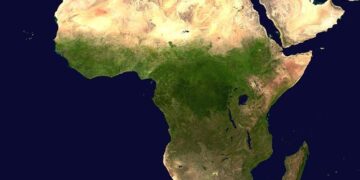Revolutionary Study Sheds Light on Marine Megafauna Migration
In a groundbreaking initiative aimed at unraveling the complexities of marine megafauna behavior and migration, scientists have released an innovative study that meticulously charts the movements of these magnificent creatures across global oceans. Featured in EurekAlert!, this comprehensive research employs state-of-the-art technology and novel tracking techniques to offer unparalleled insights into the lives of various species, including whales, dolphins, sea turtles, and large fish. As marine ecosystems increasingly grapple with challenges posed by climate change and human activities, the results of this study not only deepen our understanding of these essential animals but also highlight the pressing need for conservation initiatives focused on safeguarding their habitats. This article explores the research methodology, significant findings, and implications for marine biodiversity amid rapid environmental transformations.
Cutting-Edge Techniques Uncover Marine Megafauna Migration Patterns
Recent technological advancements are revolutionizing how researchers comprehend migration patterns among marine megafauna, revealing insights that were once obscured beneath ocean surfaces. By utilizing advanced methods such as satellite tracking systems, acoustic monitoring devices, and sophisticated data analysis tools, scientists have constructed a detailed map illustrating these majestic creatures’ movements. The study identifies crucial migratory routes along with seasonal behaviors influenced by environmental factors—providing a holistic perspective on marine ecosystems and emphasizing the critical role played by megafauna within them.
The research’s key findings indicate that various marine species—including whales, dolphins, and large fish—exhibit migratory behaviors shaped by multiple influences such as temperature fluctuations, food supply changes, and reproductive cycles. Some noteworthy observations include:
- Whale migrations: Evidence suggests a strong link between their migration paths and gradients in ocean temperatures.
- Dolphin social structures: Certain pods display distinct migratory habits shaped by social interactions within groups.
- Shark movement patterns: Tracking data reveals significant alterations in habitat usage based on prey availability shifts.
| Species | Migratory Distance (km) | Main Driver |
|---|---|---|
| Humpback Whale | 5,000 km | Mating Season |
| Pilot Whale (Short-finned) | 1 ,200 km < td > Food Availability < tr >< td > Great White Shark < td > 3 ,000 km < td > Feeding Habits |
This pioneering research not only illuminates complex behaviors exhibited by marine megafauna but also emphasizes an urgent call for conservation efforts. Grasping these migratory trends is vital for preserving marine habitats while ensuring survival against climate change impacts alongside human interference in oceanic environments.
Climate Change Effects on Oceanic Pathways of Marine Giants
The recent findings reveal significant consequences stemming from climate change affecting migratory routes among marine giants like whales and sea turtles. As water temperatures rise alongside shifting ocean currents due to climatic changes; these majestic beings must adapt their pathways to locate food sources or breeding sites effectively. Such adaptations not only influence individual species but also disrupt delicate balances within entire aquatic ecosystems. Key factors contributing to observed shifts include:
- < strong > Rising Temperatures: < / strong > Warmer waters are altering prey distribution patterns; thus prompting predators to modify their movement strategies . < / li >
- < strong > Ocean Acidification: < / strong > Changes in water chemistry adversely affect coral reefs’ health along with other essential habitats relied upon by numerous species . < / li >
- < strong > Sea-Level Rise: < / strong > Coastal regions serving as nurseries face increased submersion risks limiting available breeding grounds . < / li >
-
This transformative study utilized advanced tracking technologies enabling researchers to create extensive maps detailing evolving oceanic pathways over recent decades highlighting an immediate necessity for conservation measures addressing dynamic shifts occurring throughout our oceans . A summary showcasing observed alterations regarding migratory routes can be found below :
Species | Previous Migration Route | Current Migration Route | Blue Whale | North Pacific Ocean | Coastal Waters off California | Leatherback Turtle | Atlantic Ocean | Semi-Enclosed Gulf Of Mexico | Humpback Whale| Southern Ocean| Coastal Waters Of New Zealand| Emerging Conservation Strategies from New Insights into Marine Habitats
Recent revelations regarding spatial dynamics among various forms of aquatic life have paved new paths toward effective conservation strategies targeting vulnerable populations like sharks ,whales,and sea turtles.The thorough mapping conducted has unveiled critical areas necessitating protection efforts allowing conservationists opportunities implement targeted approaches mitigating anthropogenic impacts through adjustments shipping lanes establishment protected zones.
Looking ahead collaboration between researchers policymakers local communities will prove essential translating discoveries actionable initiatives.Some potential strategies may encompass:
- < strong > Adaptive Management Practices : < / strong >( which consider ongoing studies environmental variations ) ; < li />< Ecosystem Education Programs : Raising awareness about importance maintaining healthy oceans ; < li />< Civic Engagement Initiatives : Involving stakeholders decision-making processes ;
To maximize effectiveness interdisciplinary partnerships spanning fields such as biology,oceanography,and policy development become crucial.By harnessing emerging technologies including AI satellite monitoring future prospects conserving vital underwater environments could undergo dramatic transformations enabling real-time adaptation responses changing conditions.
Conclusion: Essential Insights Gained from Groundbreaking Research Efforts!
The revolutionary investigation detailing movements exhibited amongst diverse forms aquatic life signifies substantial progress enhancing comprehension surrounding intricate relationships existing within our planet’s vast bodies water! Through meticulous observation documenting journeys undertaken remarkable animals researchers underscore urgency implementing comprehensive protective measures safeguarding fragile ecosystems facing threats arising pollution climate change overfishing etc.! Collaborative endeavors involving global scientific community emphasize significance preserving iconic wildlife ensuring generations marvel wonders hidden depths seas! With this pivotal work laying groundwork further exploration advocacy aspirations sustainable coexistence emerge reality!































